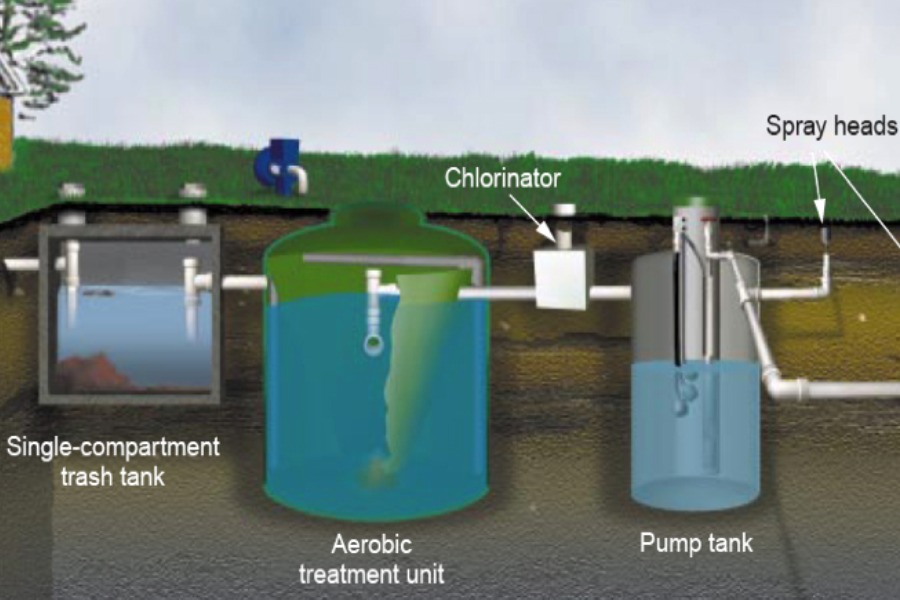Septic tanks play a crucial role in waste management for homes and buildings not connected to municipal sewer systems. These underground structures serve as the first line of defense in treating wastewater from households. These ensure that harmful contaminants are properly filtered before being released into the environment.
As technology and environmental concerns have evolved, so too have the designs and capabilities of septic tanks. Today, property owners have a variety of options to choose from, each with its own set of advantages and considerations.
Learning about the different types of septic tanks can help homeowners and builders make informed decisions about which system best suits their needs, soil conditions, and local regulations.
Septic technology offers diverse solutions, from traditional concrete tanks to modern aerobic systems, for different wastewater treatment needs. In this article, we’ll explore the diverse range of septic tank options, shedding light on their unique features and applications.
Different Types of Septic Tanks
Understanding different types of septic tanks is important for homeowners, as the right choice can impact environmental safety, maintenance costs, and longevity of the system.
The main types of septic tanks include concrete, plastic (polyethylene), fiberglass, steel, aerobic, and chamber systems. Each type of septic tank has unique characteristics that make it suitable for different situations.
Factors such as soil conditions, property size, local regulations, and budget all play a role in determining the best option. By familiarizing themselves with these various types, homeowners can better collaborate with professionals to select the most appropriate system for their needs.
1. Concrete septic tanks
Concrete septic tanks are known for their durability and long-lasting performance. These tanks are typically precast and can be customized to fit specific site requirements. They are heavy and sturdy, making them resistant to damage from soil pressure and floating in areas with high water tables.
However, concrete tanks can be prone to cracking over time, especially in areas with freeze-thaw cycles. They also require careful installation to prevent damage during transport and placement. With proper maintenance, concrete septic tanks can last 40 years or more, making them a popular choice for many homeowners.

2. Plastic (polyethylene) septic tanks
Plastic septic tanks are lightweight and easy to install, making them an attractive option for many properties. They are resistant to cracking and corrosion, which can be beneficial in certain soil conditions. These tanks are also less expensive than their concrete counterparts, reducing initial installation costs.
One drawback of plastic tanks is their susceptibility to damage from heavy machinery or vehicles driving over the installation area. They may also be prone to floating in areas with high water tables if not properly anchored. With proper care, plastic septic tanks can last 30-40 years, though they may require more frequent inspections than concrete tanks.

3. Fiberglass septic tanks
Fiberglass septic tanks offer a balance between durability and ease of installation. They are lightweight like plastic tanks but more resistant to cracking and damage. Fiberglass tanks are also non-porous, which helps prevent root intrusion and makes them easier to clean during maintenance.
These tanks can be more expensive than plastic options but are generally more affordable than concrete. One potential drawback is that they may shift in the ground if not properly installed, especially in areas with unstable soil. With proper maintenance, fiberglass septic tanks can last 40 years or more.

4. Steel septic tanks
Steel septic tanks were once common but are now less frequently installed due to their shorter lifespan and susceptibility to corrosion. They are durable and can handle heavy loads, making them suitable for installation under driveways or other high-traffic areas.
However, steel tanks typically last only 15-20 years before rusting, which can lead to collapse or leakage. They require more frequent inspections and may need to be replaced sooner than other types of tanks. Due to these drawbacks, steel tanks are generally only recommended in specific situations where other options are not feasible.

5. Aerobic septic tanks
Aerobic septic tanks differ from traditional anaerobic systems by introducing oxygen into the treatment process. This accelerates the breakdown of waste and produces cleaner effluent. Aerobic systems are often more effective at removing pathogens and reducing environmental impact.
These systems require more maintenance and have higher costs due to mechanical components. They’re often recommended for poor soil conditions or near water bodies for environmental protection.

6. Chamber septic tanks
Chamber septic tanks use a series of connected chambers to distribute and filter wastewater. These systems typically consist of arch-shaped chambers that allow effluent to seep directly into the soil. They are often made of lightweight, recycled materials, making them environmentally friendly and easy to install.
Chamber systems require less gravel in their drain fields, which can reduce installation costs. They are particularly suitable for areas with high water tables or challenging soil conditions. However, they may have a larger footprint than traditional tanks and may not be suitable for all properties.

Types of Septic Tank Systems
Conventional septic systems
Conventional septic systems consist of a septic tank and a drain field. Wastewater flows from the home into the tank, where solids settle and liquids flow into the drain field for further treatment and absorption into the soil. These systems are simple, cost-effective, and require minimal maintenance when properly used.
However, conventional systems may not be suitable for all soil types or properties with high water tables. They also require a significant amount of land for the drain field. Regular pumping and inspections are necessary to prevent system failures and ensure longevity.
Mound septic systems
Mound septic systems are elevated drain fields created with sand and gravel on top of the natural soil surface. They are designed to overcome challenges posed by shallow soil depth, high groundwater, or poor soil percolation. Wastewater is pumped from the septic tank to the mound for treatment and dispersal.
While mound systems can effectively treat wastewater in challenging conditions, they are more expensive to install and maintain than conventional systems. They also require a larger land area and may be visually obtrusive. Regular monitoring of the pump and mound is essential to ensure proper functioning.
Drip distribution septic systems
Drip distribution systems use a network of shallow, narrow tubing to distribute effluent evenly across the drain field. A pump sends treated wastewater through the tubing, which has small holes that allow for slow, controlled release into the soil. This method provides efficient distribution and promotes better soil absorption.
These systems are versatile and can be used on irregular or sloping lots where conventional systems might not work. However, they are more complex and typically more expensive to install and maintain. The pump and filters require regular cleaning and occasional replacement to prevent clogging and ensure proper operation.
Conclusion
In conclusion, the diverse array of septic tank types and systems offers solutions for a wide range of property needs and environmental conditions. From traditional concrete tanks to innovative aerobic systems, each option presents unique advantages and considerations.
By exploring the various types of septic tanks, we hope you have gained a better understanding of the complexities involved in choosing the right wastewater management solution. Consider your specific circumstances, local regulations, and long-term maintenance requirements when choosing a septic system. This applies whether you opt for a conventional system or a more specialized approach like a mound or drip distribution system.
Remember, consulting with local experts like ourselves at Septic Tank Installation Riverside is always advisable to determine the best septic solution for your unique situation.


